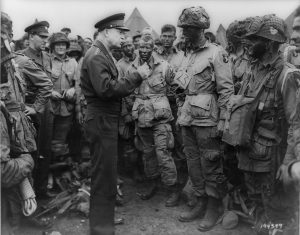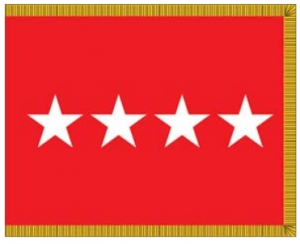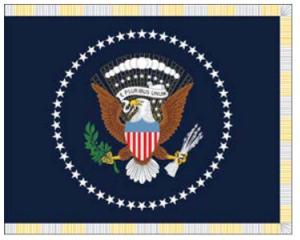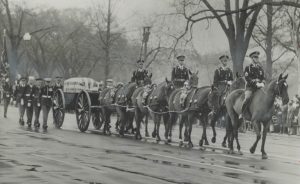Remembering D-Day 75 Years Latter
by John M. Hartvigsen
Even with the hindsight of history, Operation Overlord looms gigantic almost beyond belief. This amphibious landing of 156,000 troops with 5,000 vehicles included the armed forces from the United States., the United Kingdom, Canada and other Allied Nations. Requiring 6,000 ships & landing craft and 11,000 planes to commence the long-awaited invasion of occupied Europe. Of the troops who stormed the beaches of Normandy over 12,000 were killed, wounded, captured or missing.
As General Eisenhower expressed it, he had full confidence in “the courage, devotion to duty and skill in battle” the men who fought their way ashore and fought inland to win “full victory” their “battle-hardened” enemy. Being the Supreme Allied Commander, Eisenhower also had confidence in the battle plans, the staging of troops, equipment and transports. He also knew that successful security had denied the enemy any advanced knowledge of the time or location of the landing. Decisions had been “based upon the best information available.” Nevertheless, as the Supreme Commander he knew that things could go terribly wrong, and the invasion could fail in a debacle that could cost numerous lives. Here Eisenhower displayed qualities that demonstrated remarkable leadership. He grabbed a stubby pencil and scrawled a note to be dispatched if the worst were to occur. In the brief few sentences he did not search for an excuse or to blame others. He wrote that in case of failure blame or fault would be his “alone.”
“Our landings in the Cherbourg-Havre area have failed to gain a satisfactory foothold and I have withdrawn the troops. My decision to attack at this time and place was based upon the best information available. The troops, the air and the navy did all that bravery and devotion to duly could do. If any blame or fault is attached to the attempt it is mine alone.”
Of course, the landing did not fail, and the invasion led to “full victory” and the liberation of occupied Europe. The crudely written note might have been lost and forgotten; however, it tells much about the man and his qualities as a leader.
Top leadership roles came many times to Dwight David Eisenhower during his military and political career, which is no surprise. Each echelon of leadership found symbolism in the flags displayed in his honor. On June 6th, Eisenhower held the rank of General and four stars can be seen on his uniform as he talks with soldiers soon to enter battle as shown above. He and they had to know that some in their group perhaps had only hour more to live. That is a burden to the leader that must send troops into battle.
While still leading the fight to defeat Nazi Germany, Eisenhower rose to the rank General of the Army symbolized by five stars.
After Germany’s defeat, Eisenhower served as the U.S. Army’s Chief of Staff, which added a new flag to represent his office.
Returning to civilian life, Eisenhower accepted nomination for the U.S. Presidency, which he won for two terms and Ike displayed the U.S. President’s flag in the Oval Office while he sat at the President’s desk.
However, when Dwight David Eisenhower died, it was the Stars & Stripes that covered his casket for the return to Abilene, Kansas for his burial. Like troops who died storming Utah and Omaha Beaches on D-Day, the flag of the United States provided the greatest tribute for a soldier who served his country with fidelity and honor.






